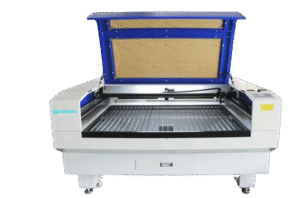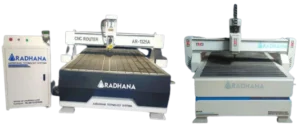In today’s rapidly evolving manufacturing landscape, CNC Machine Programming plays a pivotal role in increasing productivity, precision, and efficiency.
CNC, short for Computer Numerical Control, involves the use of computers to control machine tools such as lathes, mills, routers, and grinders.
This technology has transformed traditional machining into a highly automated, computer-driven process.
For industries looking to optimize their manufacturing workflows, understanding CNC Machine Programming is essential.

CNC Machine Programming is the process of creating a set of instructions, often called a CNC code or G-code, that tells a CNC machine how to perform specific operations. These instructions determine how the machine moves, what tools it uses, the sequence of operations, cutting speeds, and much more. Essentially, CNC programming translates a designer’s digital model into precise physical components with minimal manual intervention.
There are two main types of CNC programming:
Looking for creative CNC projects? Check out how CNC machines are used in crafting artistic and customized products in our blog: Crafting Beautiful Gift Items with a CNC Machine. Discover how precision meets art and unlocks new possibilities for hobbyists and professionals alike.
Modern manufacturing relies on tight tolerances and consistent quality. With manual machining, achieving such precision can be time-consuming and error-prone. CNC Machine Programming offers several key benefits:
For companies in aerospace, automotive, electronics, and medical device manufacturing, these advantages translate into lower costs, faster turnaround, and higher product quality.

The most commonly used programming language in CNC machining is G-code. G-codes (Geometric codes) control the motion of the machine, while M-codes (Miscellaneous codes) manage auxiliary functions like turning the spindle on/off, coolant, or tool changes.
Here are some basic G-codes:
And some common M-codes:
Understanding these codes is critical for creating and troubleshooting CNC Machine Programming scripts.
Looking to explore CNC solutions tailored to your manufacturing needs? Visit Aaradhana Tech for customized training, expert guidance, and automation services that can elevate your machining process to new levels of precision and productivity.
To develop an effective CNC program, a step-by-step approach is typically followed:

CNC Milling Machines Market Size to Hit USD 116.88 Bn by 2034
Several tools make CNC Machine Programming more accessible and efficient. Some of the most popular include:
Each software has unique features tailored for different types of machining and user expertise levels.
While CNC programming offers immense advantages, it also comes with its set of challenges:
Therefore, hands-on experience and continuous training are vital for CNC programmers to stay effective.
The field of CNC programming is constantly evolving. Some emerging trends include:
These innovations promise to make CNC Machine Programming more intelligent, adaptive, and efficient.
With the rise of Industry 4.0, CNC Machine Programming is increasingly integrated with other digital systems like ERP (Enterprise Resource Planning), MES (Manufacturing Execution Systems), and digital twins. This integration helps manufacturers achieve smart automation, better resource planning, and real-time monitoring of machine health and productivity.
For example, real-time data from CNC machines can be fed into analytics platforms to identify bottlenecks or inefficiencies. This data-driven approach significantly improves manufacturing intelligence.
Whether you’re a small workshop owner or a part of a large industrial operation, investing time and resources into mastering CNC Machine Programming is a smart move. It enhances product quality, speeds up production, and opens the door to creating complex and innovative parts with unmatched precision.
At AaradhanaTech, we understand the transformative power of CNC technologies. Our training, support, and consultation services are designed to help you leverage the full potential of CNC Machine Programming. Whether you’re just starting or looking to upgrade your existing systems, we’re here to support your journey toward smart manufacturing.
Fill out this form and our team will call you with best offers on CNC Router machines.
This will close in 20 seconds